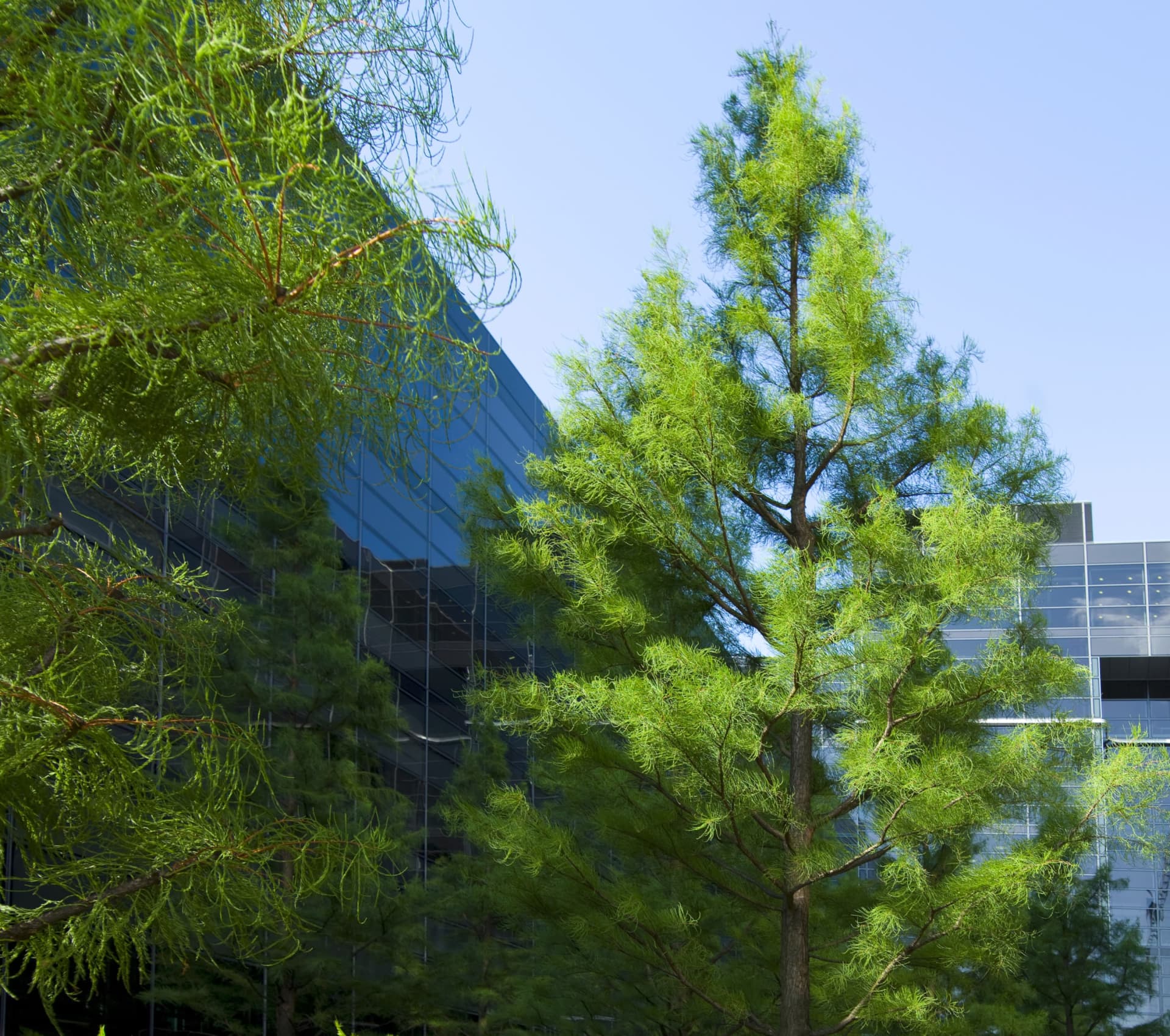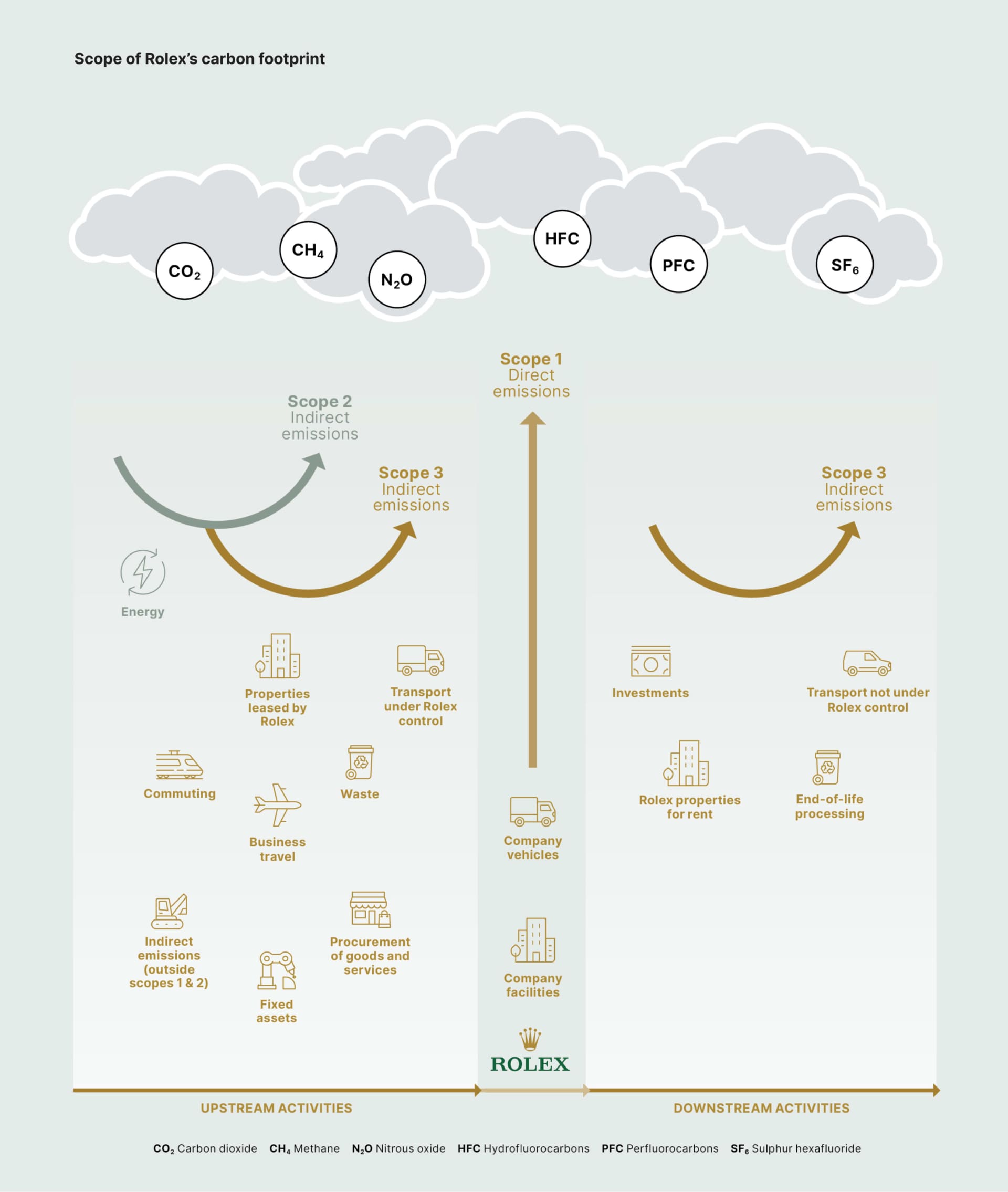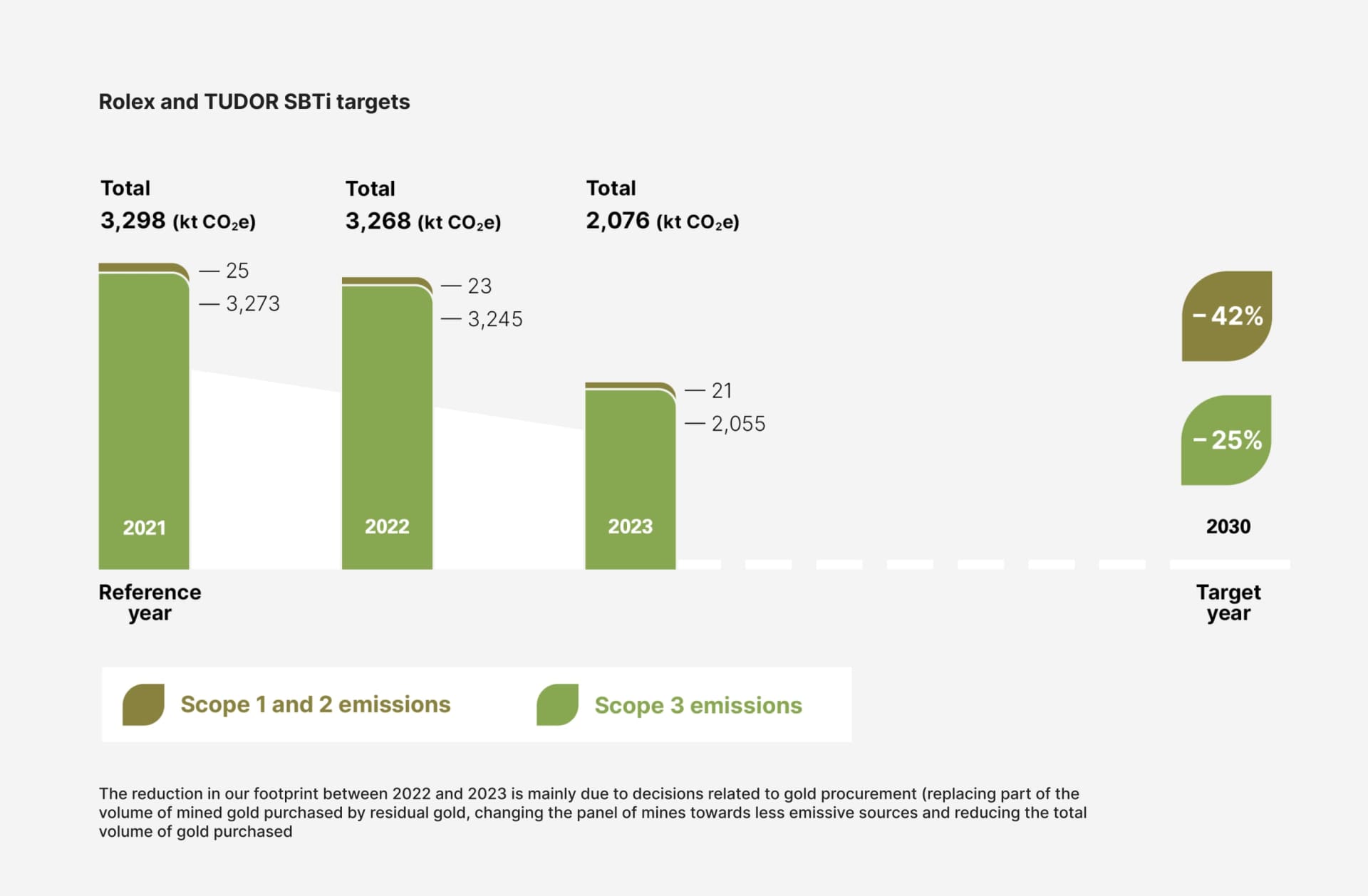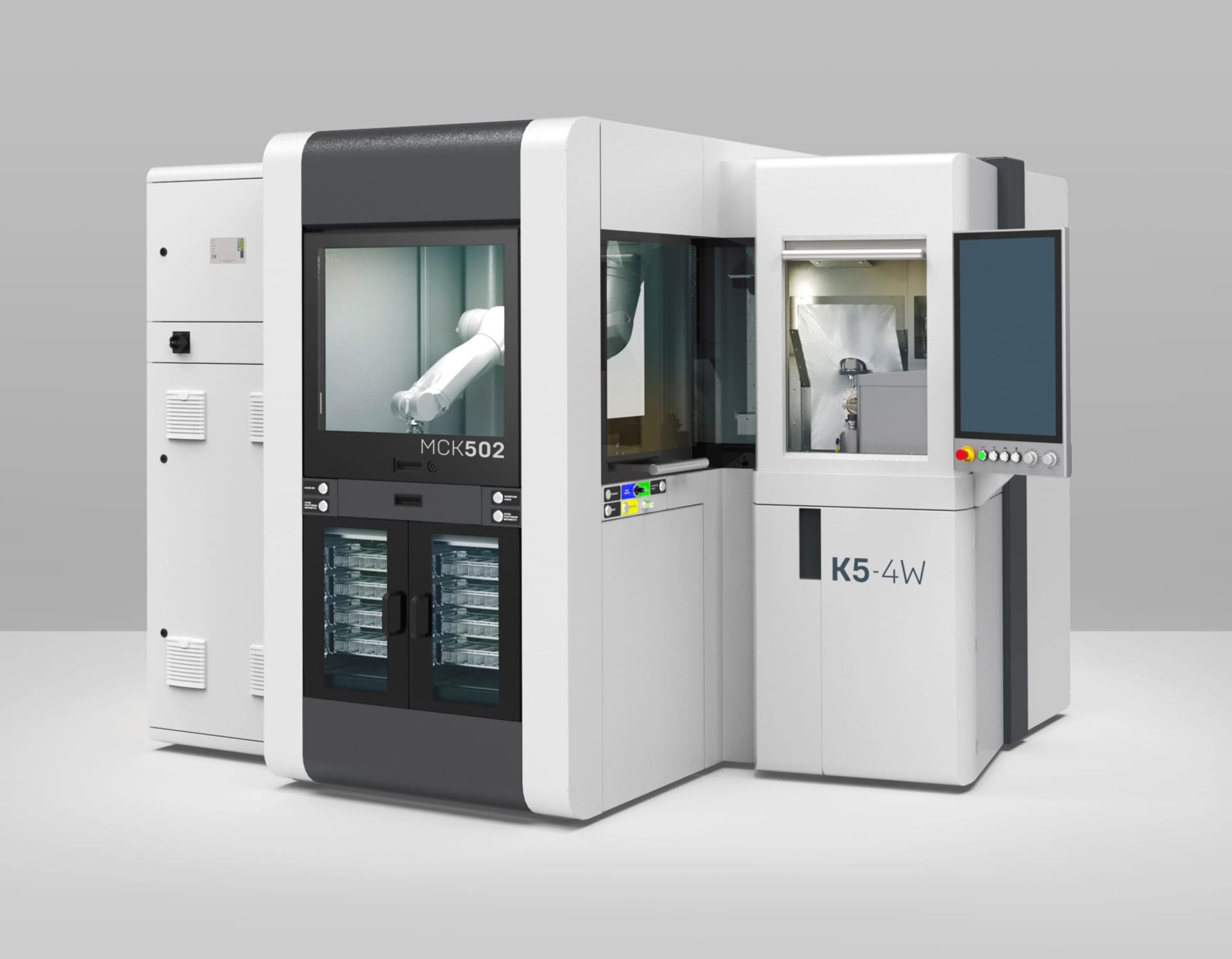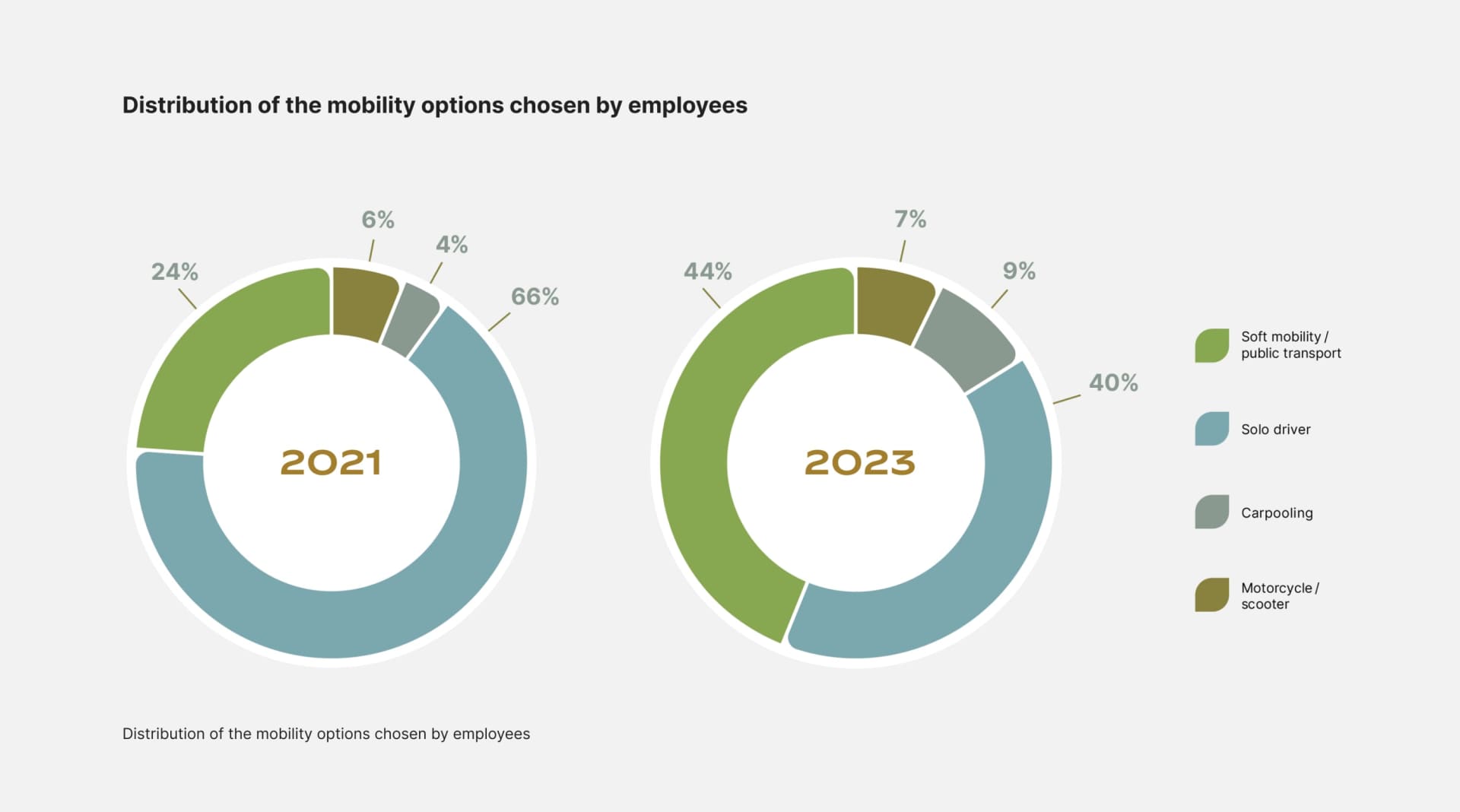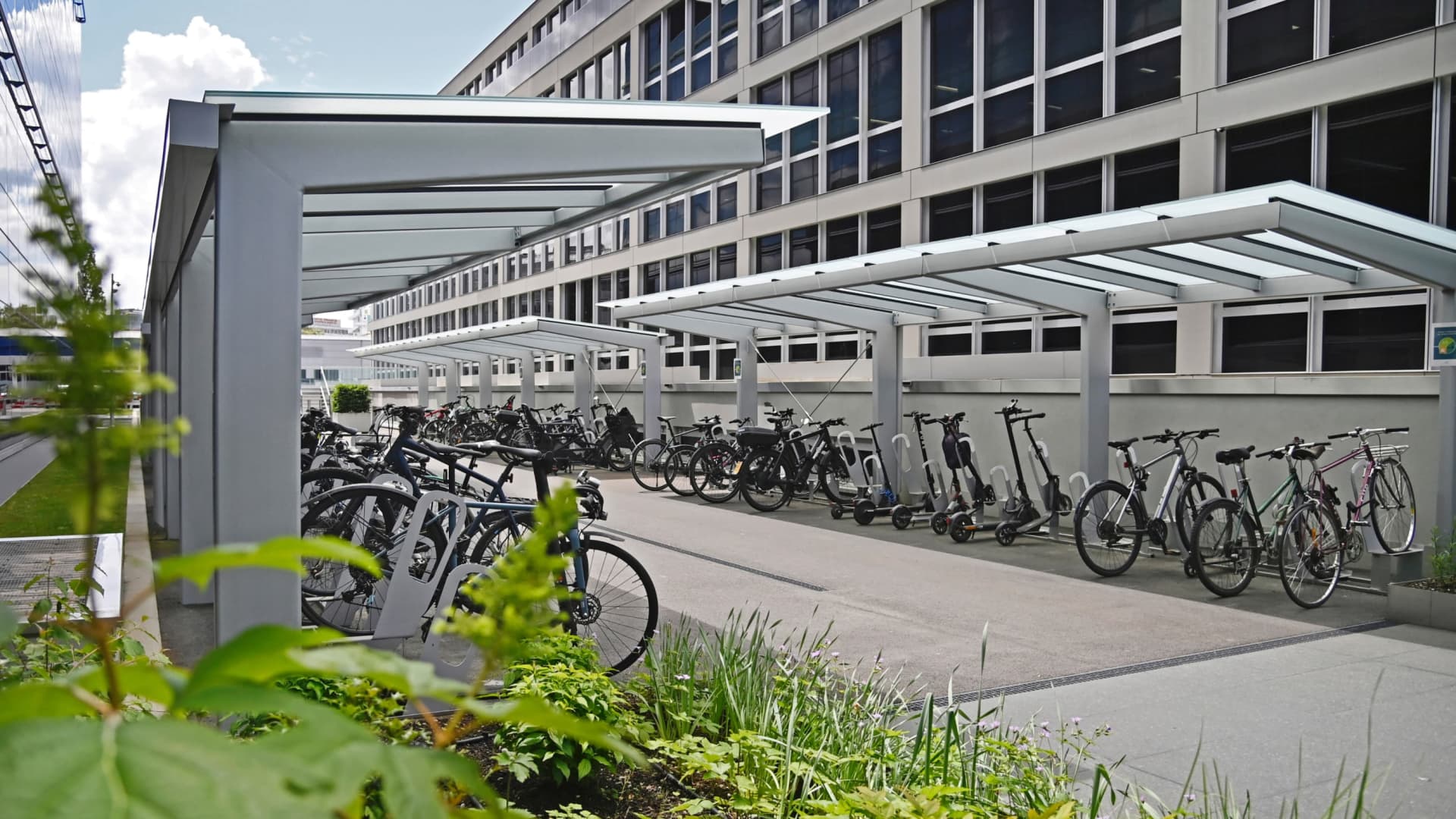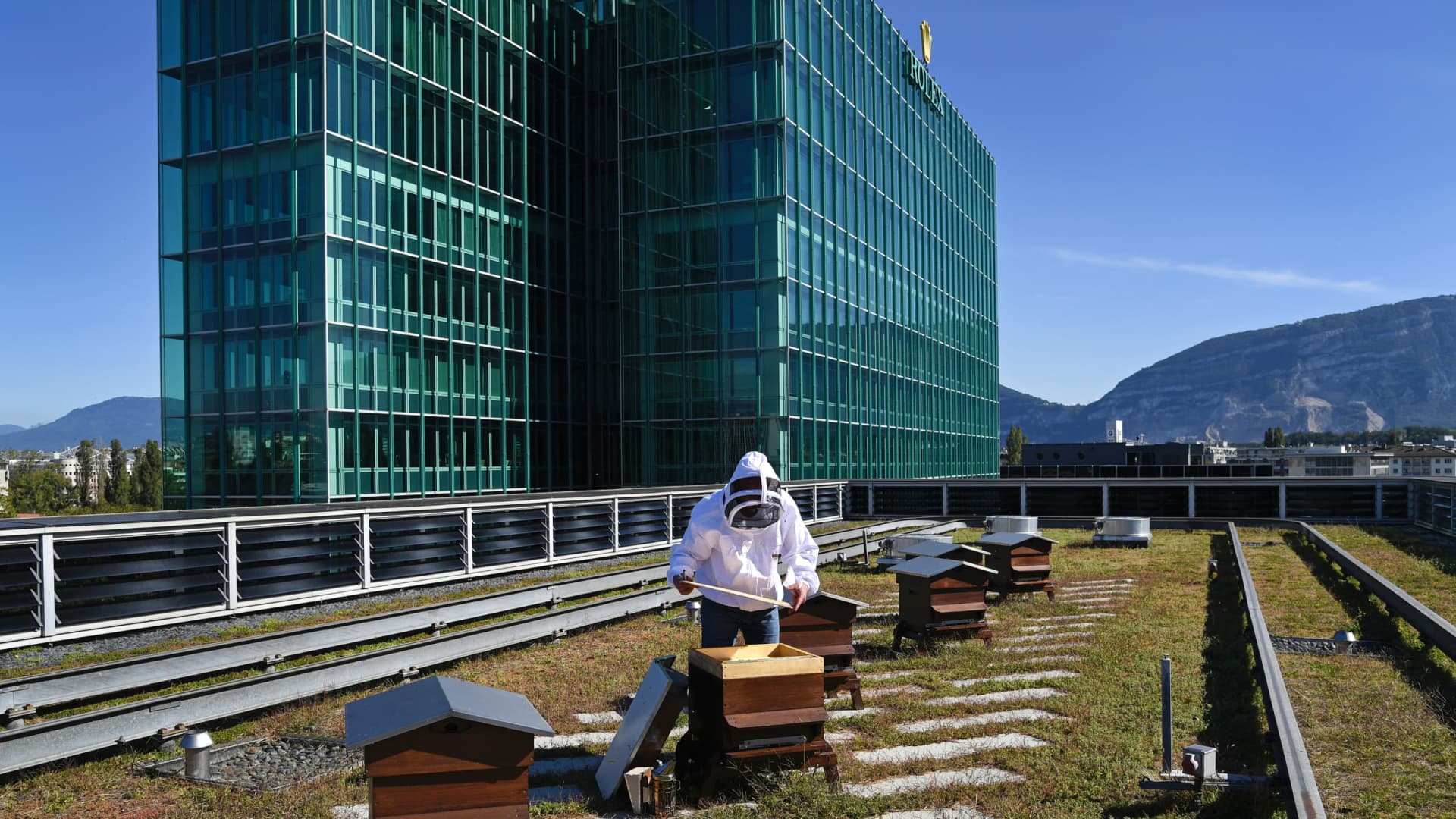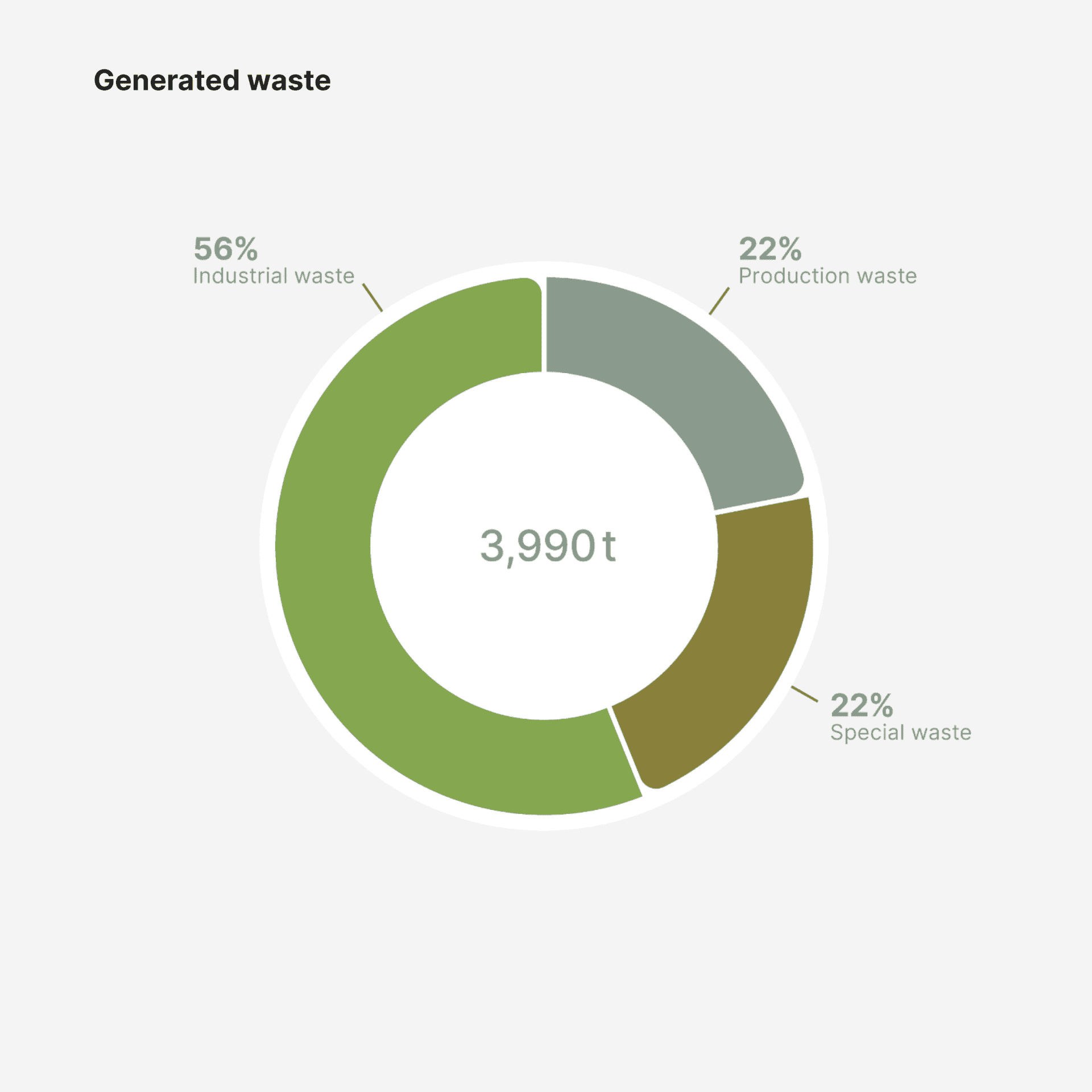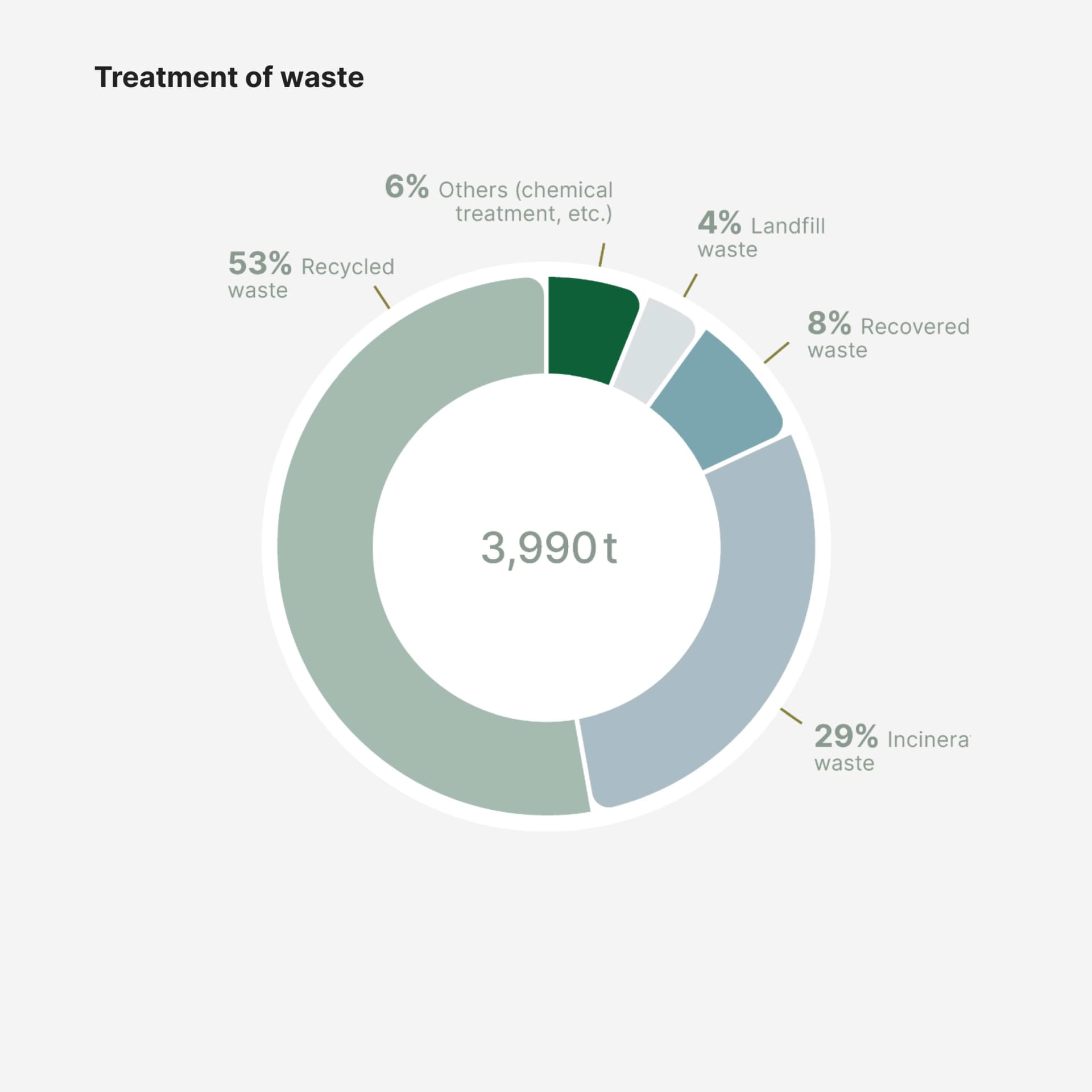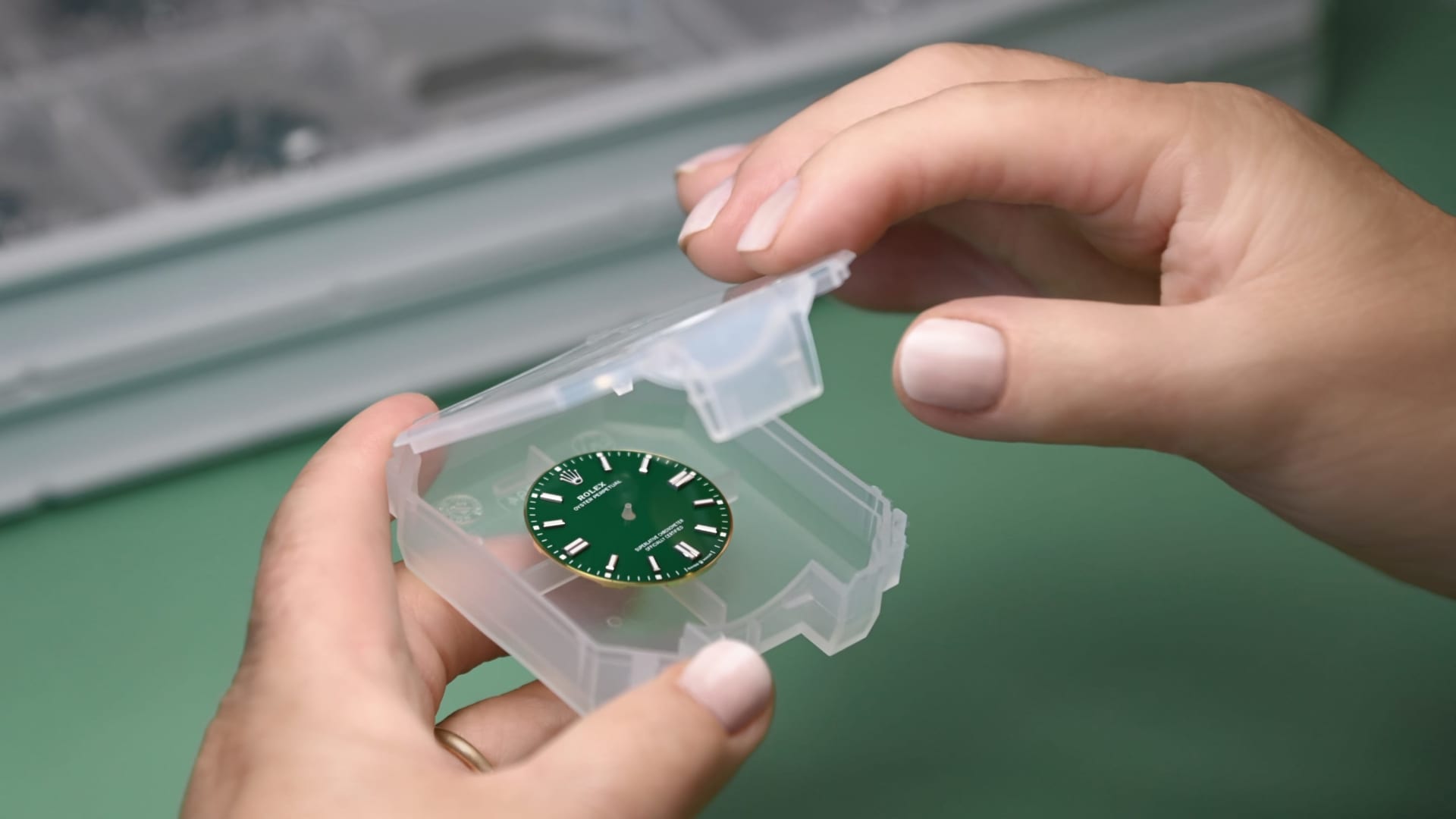Responsible consumption
Although Rolex’s energy consumption has a minor impact on its carbon footprint, the company is improving its efficiency in this area every year. To do this, Rolex promotes responsible consumption in all its workshops and optimizes the performance of the production resources that consume the most energy. It is continuing and intensifying its efficiency efforts wherever possible, both at production sites and in administrative buildings.
Buildings
The buildings at the Geneva sites (located near residential areas) and the Bienne site (situated in an industrial area far from the city centre) comply with different energy constraints and regulations. This may mean, for example, that certain heat production systems may or may not be installed in the administrative and industrial buildings.
Energy
From the early 2000s, the company decided to permanently stop using fuel oil to meet its heating needs. Today, Rolex’s energy strategy is based on two key areas, fully aligned with the targets published by the Swiss Federal Energy Office:
— Developing alternatives to fossil fuels (including natural gas) by 2030 as far as possible;
— Guaranteeing that every kilowatt-hour distributed and consumed is used efficiently.

Heat pumps
Heat pump technology, which was non-existent just a few years ago, is now used in nearly all the buildings in Geneva. These pumps are enabling a gradual shift away from fossil fuels without requiring significant additional electricity: they replace existing cooling units and recover heat generated by production that previously dissipated into the atmosphere. In the context of new builds on suitably prepared plots, the company connects heat pumps to geothermal probes to further enhance their energy performance. This is the case for the upcoming building in Chêne-Bourg, as well as the Les Petits Chronos company crèche, which is Minergie-ECO-certified and located in Geneva’s Pont-Rouge district. Technical spaces have also been reserved to eventually be able to connect new heat pumps to a remote heat exchanger network, depending on the opportunities that arise.
Coolants
Older-generation coolants have a severe impact on the environment, particularly the ozone layer, if they leak into the atmosphere. For several years, Rolex has met and exceeded legal requirements by systematically replacing equipment containing coolants with new- generation machines running on refrigerants that have
a lower environmental impact. In time, all the cooling systems used in cafeterias and cold rooms will be equipped with machines that run on CO2. This new equipment also makes it possible to produce most of the company’s domestic hot water without using fossil fuels.
Natural gas
Natural gas, which pollutes less and emits less CO2 than fuel oil, is still widely used at Rolex’s industrial sites in Switzerland. A transition energy by definition, this energy carrier must gradually be replaced by more sustainable solutions. However, residual energy consumption (the minimum amount of energy consumed permanently by a building) will persist in the oldest buildings during periods of extremely cold weather. Nonetheless, all gas supplied by Services Industriels de Genève is offset in terms of CO2 using quality certificates controlled by Société Générale de Surveillance (SGS).
